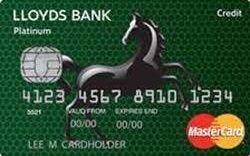 Find the best balance transfer and purchase credit card deals to give you the most flexible and adaptable 0% credit card option. We have dedicated pages for the best 0% balance transfer credit cards and for the best 0% purchase credit cards, but this article will focus on the cards that offer the best combination of both 0% options. These all-rounder cards allow you to transfer over existing debt from a high interest credit card to pay off steadily over the 0% period, while also allowing you to continue to spend money without paying interest for a number of months. As well as listing the top cards and all the important details, we will also explain all the key information you need to know before you apply.
Find the best balance transfer and purchase credit card deals to give you the most flexible and adaptable 0% credit card option. We have dedicated pages for the best 0% balance transfer credit cards and for the best 0% purchase credit cards, but this article will focus on the cards that offer the best combination of both 0% options. These all-rounder cards allow you to transfer over existing debt from a high interest credit card to pay off steadily over the 0% period, while also allowing you to continue to spend money without paying interest for a number of months. As well as listing the top cards and all the important details, we will also explain all the key information you need to know before you apply.
What is a balance transfer and purchase credit card and how does it work?
As the name suggests, a balance transfer and purchase credit card – also known as an 'all-round' credit card – combines introductory offers on both balance transfers and purchases. On some cards, the length of the interest-free period will be the same for both balance transfers and purchases, while for others they will be different. It's important to have a clear idea of what the offer is on the card you apply for as this will enable you to better manage your use of the card and avoid having to pay a higher APR when the introductory period comes to an end.
It is a good idea to look at the other features of the card in addition to the headline introductory offers on balance transfers and purchases. There are often additional offers on money transfers, while some cards provide perks such as rewards and cashback. It is also vitally important to consider how much the card will cost after the initial offer period has come to an end, as well as the details of the balance transfer and purchases components, including:
- How long do you have to transfer a balance after taking out the card?
- Is there a balance transfer fee?
- Are there any limits on the credit cards you can transfer money from? (Often you won't be able to transfer debt between cards from the same lender)
- What is the credit limit?
- Are there any restrictions on the time period you can make purchases within and still qualify for the interest-free offer?
A balance transfer and purchase credit card allows you to transfer an existing balance from another credit or store card while continuing to spend. The additional purchases also attract no interest for a specified period. In most cases you will need to transfer the balance within a certain number of days after being accepted for the card – typically 30-90 days. There may be a fee payable on the balance you are transferring, which can be anything up to 3.5% of the total amount with the best cards.
It is worth noting the introductory period starts from the moment you are accepted for the card rather than when you action a balance transfer or make your first purchase. You will also need to make sure you keep up with the monthly repayments on the debt. This applies even during the interest-free period, as you are likely to be liable for a late fee and could lose the introductory offer altogether if you miss a payment.
When the introductory period comes to an end, any remaining debt and future purchases will then attract interest. At this point, some people opt to find another card with an interest-free offer and transfer the remaining balance again. However, it can be detrimental to your credit file to frequently take out new cards, so you should aim to clear the debt over the interest-free period. Your credit score can also be negatively affected if you close an unused card and significantly increase the percentage of your available credit being used. For more information on this, read our article 'Will cancelling an unused credit card affect my credit score?'.
How to find out which credit card is best for you
Money to the Masses uses Creditec*, an online comparison service that enables you to find credit card deals tailored to you without affecting your credit score. You will want to compare as many different options as possible before you get a new credit card, so it is a good idea to do a fast online comparison. With only a few basic details, the Creditec tool will build a personalised list of credit cards suited to your needs to help you navigate the huge number of options out there. You can then pick the result that suits you best. None of this will affect your credit score as the eligibility process uses a soft credit check. Click here to start your comparison*.
Compare the best balance transfer and purchase credit cards – January 2025
| Card | 0% balance transfer period | 0% purchases period | Balance transfer fee | Representative APR | Best for |
| HSBC Purchase Plus Credit Card - Check eligibility* | Up to 17 months | Up to 20 months | 3.49% (minimum £5) | 24.9% variable | Using your credit card abroad |
| Barclaycard Platinum Credit Card - Check eligibility | Up to 22 months | Up to 19 months | 3.45% | 24.9% variable | Longest interest-free period |
| NatWest Purchase & Balance Transfer Credit Card1 - Check eligibility | 18 months | 20 months | 2.99% | 24.9% variable | Guaranteed interest-free period |
| M&S Credit Card Purchase Plus - Check eligibility* | Up to 12 months | Up to 20 months | 3.49% (minimum £5) | 24.9% variable | Rewards |
| Santander All in One Credit Card - Check eligibility* | 15 months | 15 months | 0% (£3 monthly fee) | 29.8% variable | No balance transfer fee and cashback |
| Capital One Balance Transfer Credit Card - Check eligibility | Up to 18 months | Up to 3 months | 3.00% | 34.9% variable | Applicants with bad credit |
1Also available from sister banks RBS and Ulster Bank
Best for cashback bonus
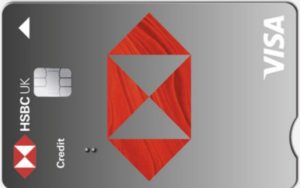
- Best for: Cashback sign-up bonus
- Representative APR: 24.9% APR variable
- Interest-free period on balance transfers: Up to 17 months (balance transfer fee of 3.49%, min £5)
- Interest-free period on purchases: Up to 20 months
- Perks: You can use your HSBC credit card in all countries and regions supported by the Visa and Mastercard networks
- Annual fee: £0
Best for longest interest-free periods
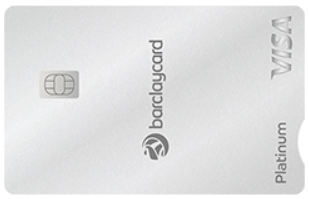
- Best for: Those looking for the longest interest-free periods
- Representative APR: 24.9% APR variable
- Interest-free period on balance transfers: Up to 22 months (balance transfer fee of 3.45%)
- Interest-free period on purchases: Up to 19 months
- Perks: Cashback at select retailers through the Barclaycard Cashback Rewards scheme
- Annual fee: £0
You can find more information on the Barclaycard website.
Best for guaranteed interest-free periods
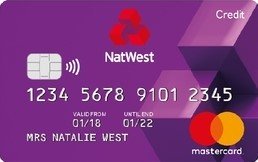
- Best for: Those looking for certainty they will get the full introductory period if accepted for the card
- Representative APR: 24.9% APR variable
- Interest-free period on balance transfers: 18 months (2.99% balance transfer fee)
- Interest-free period on purchases: 20 months
- Perks: None
- Annual fee: No annual fee
You can find more information on the NatWest website. The same offer is also available from sister banks RBS and Ulster Bank.
Best for rewards
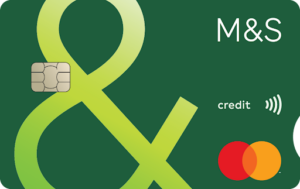
- Best for: Those who regularly shop at M&S
- Representative APR: 24.9% variable
- Interest-free period on balance transfers: 12 months (3.49% fee, min £5)
- Interest-free period on purchases: 20 months
- Perks: Earn 1 rewards point per £1 spent in M&S and 1 rewards point for every £5 spent elsewhere. 100 rewards points can be redeemed for £1 in M&S vouchers.
- Annual fee: No annual fee
For a full review, see our article 'M&S Purchase Plus Offer credit card review'. You can also find more information on the M&S website.
Best for cashback

- Best for: Those wanting to pay no balance transfer fee and earn cashback on their spending
- Representative APR: 29.8% variable
- Representative example: When you spend £1,200 at a purchase rate of 23.9% (variable) p.a. with a fee of £36 per annum, your representative rate is 29.8% APR (variable).
- Interest-free period on balance transfers: 15 months (0% fee)
- Interest-free period on purchases: 15 months
- Perks: 0.5% cashback on purchases (maximum £10 per month)
- Annual fee: £36 (£3 per month)
You can also find more information on the Santander website.
Best for those with bad credit
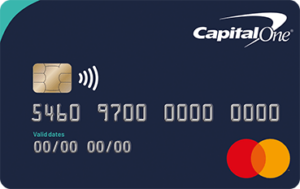
- Best for: Those with an average credit score. You are unlikely to be accepted if you have a heavily impaired credit history
- Representative APR: 34.9% variable
- Interest-free period on balance transfers: Up to 18 months (up to 3% fee)
- Interest-free period on purchases: Up to 3 months
- Perks: No additional perks
- Annual fee: No annual fee
For other options for those with poor credit, see our article 'Compare the best credit cards if you have bad credit'. You can also find more information on the Capital One website.
How to get the most of a balance transfer and purchase credit card
A balance transfer and purchase credit card is a good option for someone who is looking to simplify their finances. Rather than having to manage two cards, you only have to focus on making the payments and managing the spending on one. While it used to be the case that you could get much better deals by taking out separate cards for balance transfers and purchases, growing competition means there are some excellent deals available for these multipurpose, all-round cards.
Choosing to apply for one all-round card can also be better for your credit file, as it can have a negative impact if you apply for several different cards at the same time. If you have problems keeping up with repayments later down the line, it will mean you only have one credit card company to communicate with to try to secure extra help.
What to consider before you get a balance transfer and purchase credit card
If you have a significant amount of debt and you are struggling to keep up with the repayments, particularly if you are paying a high APR, taking out a balance transfer and purchase card could be a good idea. It gives you breathing space to sort out your finances, using the money you are saving on interest payments to pay off more of the core debt. However, with the facility to also make other purchases with no interest payable during the 0% period, it can be tempting to increase your total debt. Having months – or even years – to pay it all off before you have to start paying interest on the card can tempt you to overspend. Unless you use the card responsibly, you could end up in a worst financial position.
The best way to use a balance transfer and purchase card to tackle debt is as part of a well planned-out strategy. This could include:
- Committing to paying more than the minimum repayment every month: By paying as much as you can afford now, you will reduce the overall debt and hopefully clear it before the end of the introductory period
- Limit any additional spending on the card: While the interest-free period on purchases will have been part of the attraction of the card in the first place, use it for the specific purchases you had in mind when taking out the card and keep all future spending after that to a minimum
- Work out a budget: If you plan to use the card for day-to-day spending, determine in advance how much you are going to spend and commit to paying it off in full each month
- Work out how much you need to pay off each month to be able to clear the total debt by the end of the 0% period: It can be useful at the outset to have a month-by-month breakdown of how much you need to pay off to be debt-free at the end of the introductory period. You can incorporate this into one of the many budgeting apps that are now available
If you are experiencing problems with managing your debt, you can find details of sources of help in our article 'Where to get free debt advice'.
Pros and cons of a balance transfer and purchase credit card
Here is a summary of the key advantages and disadvantages of 0% interest credit cards:
Pros of a balance transfer and purchase credit card
- No interest for a set period
- Spread the cost of large purchases without paying interest
- Continue to spend interest-free without paying interest on your balance
- Reduce the interest on an existing balance by transferring it to a 0% balance transfer credit card
- Fee-free options available
Cons of a balance transfer and purchase credit card
- Once your 0% introductory period is over, you will be charged interest on your remaining balance
- You will need to pay a balance transfer fee to get the longest 0% interest periods
- A late payment could mean your interest-free period is cut short
Alternatives to a 0% purchase credit card
0% credit cards are a flexible way of borrowing money over a short period as long as you clear the amount owed every month or within the interest-free period. However, there is a great temptation to keep using your credit card for small everyday purchases allowing the balance to grow over time, incurring high-interest charges.
Personal loans are a more structured way of borrowing money with a set repayment period and interest rate. Interest rates on loans tend to be lower than with credit cards but obviously with a 0% credit card you can take advantage of the interest-free period to clear your debt without incurring any interest charges.
For more information read our article: Is it better to get a credit card or a personal loan?.
If a link has an * beside it this means that it is an affiliated link. If you go via the link Money to the Masses may receive a small fee which helps keep Money to the Masses free to use. But as you can clearly see this has in no way influenced this independent and balanced review of the product.



